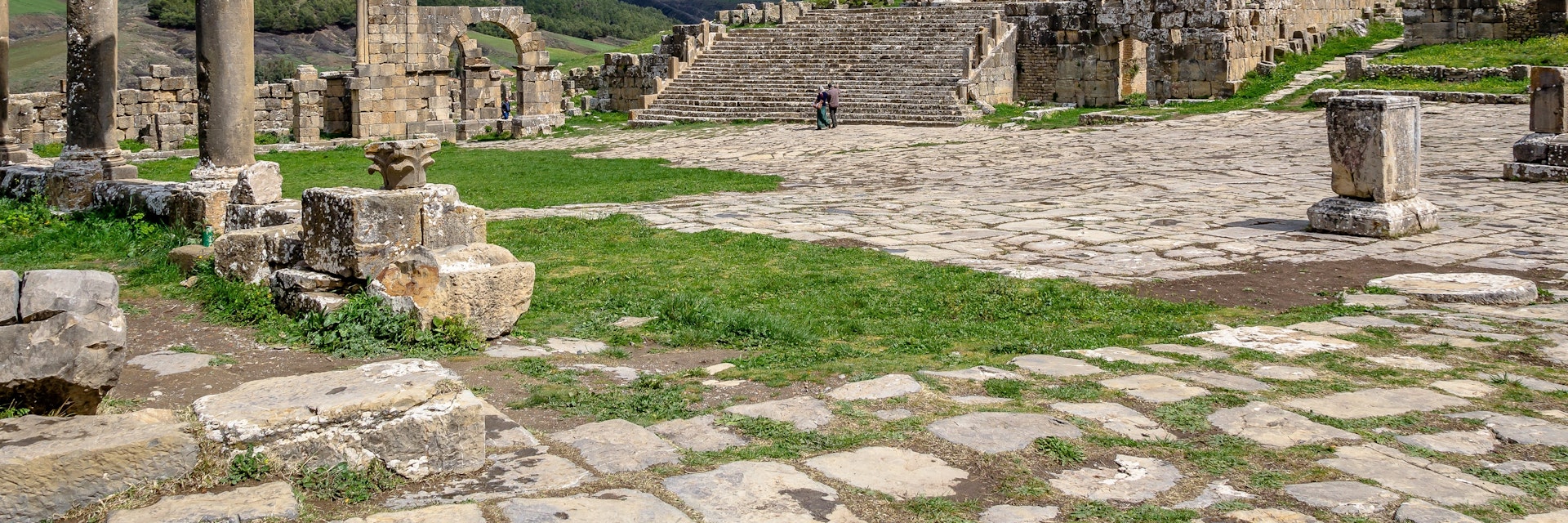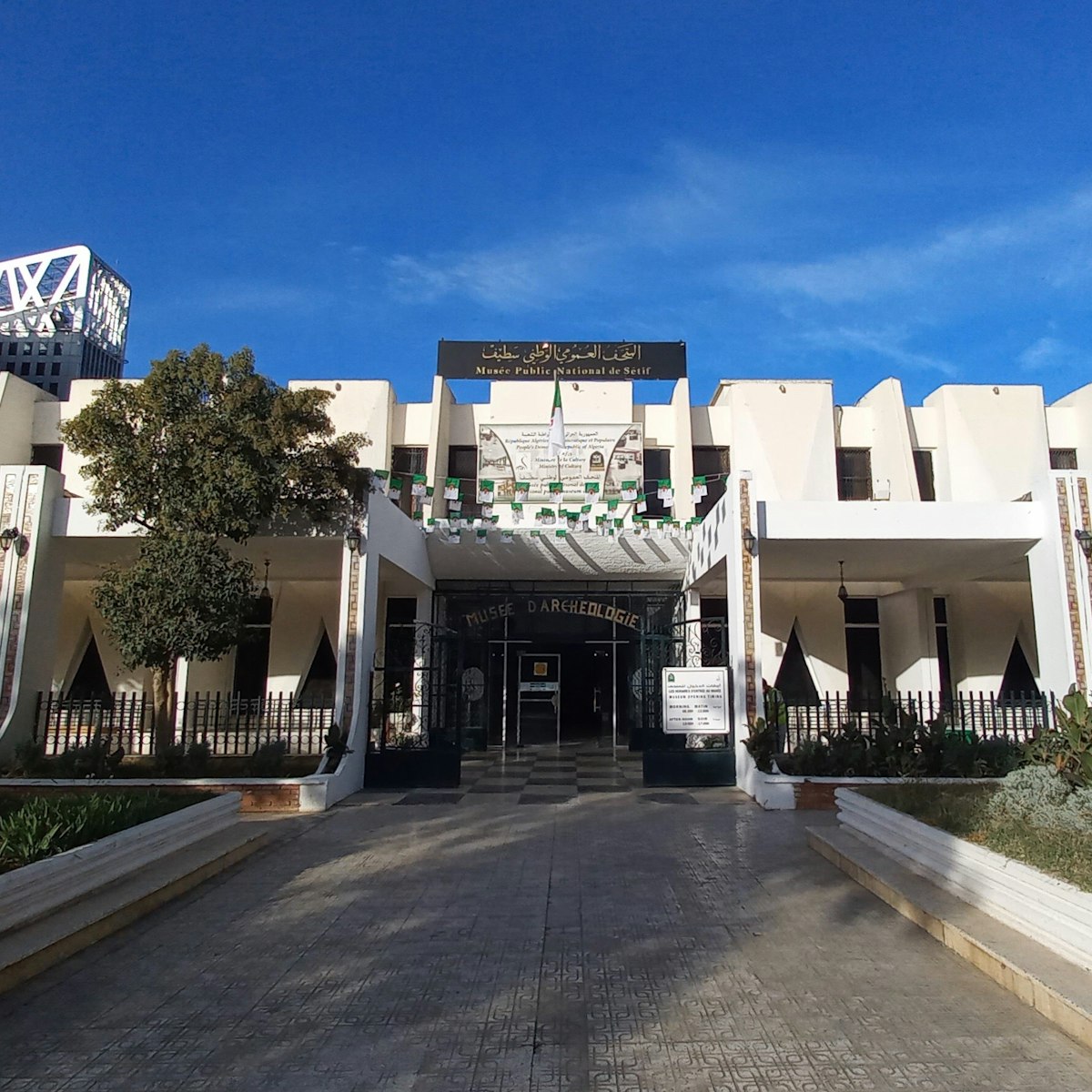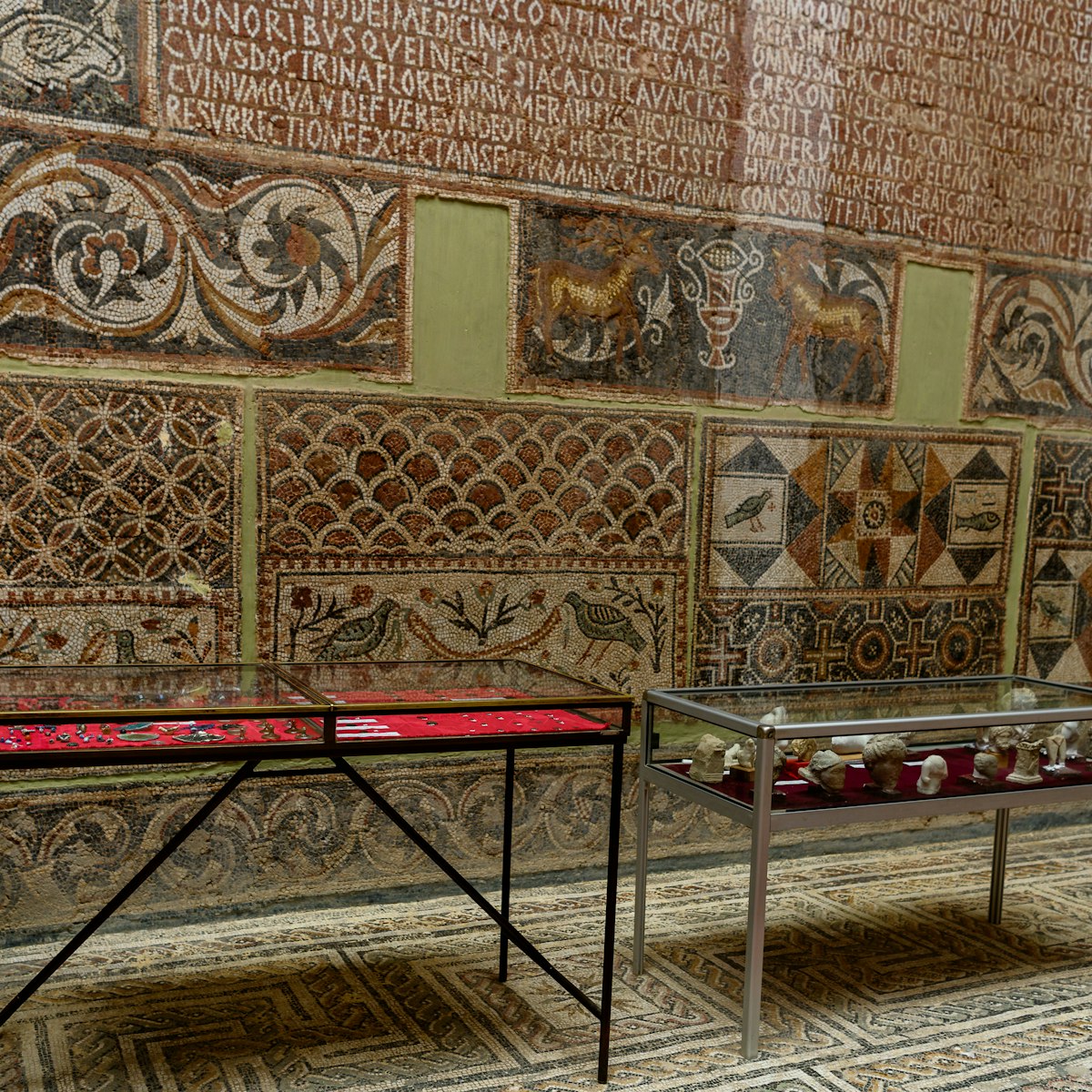The spectacular ruined Roman town of Djemila (or Cuicul as it was then known) is small enough to breeze around in half a day. But spend longer here, linger in the temples and markets, stroll through the bath chambers, or just lie down in the shade of villa walls and conjure up the sounds and sensations of those long gone days; one of the world's great archaeological sites will come alive.
From the ticket gate and the museum, cross the meadow directly to the ruins. This will bring you to the end of the later extension of the cardo maximus. This street, which runs north–northwest, crosses the centre of Djemila. Passing a series of houses, after some 50m you will see, to the left, the Grand Baths, built in AD 183 during the reign of Emperor Commodius. These were designed along a symmetrical plan where a double-sided exercise room leads to two changing rooms and then on to the hot, tepid and cold rooms. The baths are well preserved, and below floor level, beyond the hot room, you can see where fires were stoked to provide heat. Water was stored in cisterns along the northern side.
Arch of Caracalla
Immediately to the south of the baths is the House of Bacchus, a grand mansion built around the beginning of the 5th century, with two gardens and a pool which served as the household fish tank. Continuing north past a ruined fountain (on the left), the cardo comes into the place des Sévères (Square of the Severus family), the centrepiece of the extended town. Immediately to the left is the Arch of Caracalla, decorated with columns and Corinthian capitals. Originally it was graced with statues of the emperor and his parents, Septimus Severus and Julia Domna. This was the town’s west gate and, at 12.5m high, it made an imposing entrance for people coming from Sétif and beyond. The arch was dismantled by the Duc d’Orleans in 1839, ready to be shipped to Paris, but when the duke died three years later the project was scrapped. The arch was reconstructed in 1922.
Temple of the Severan Family
Immediately to the north of the arch was a fabric market, built in the 360s, and a public latrine. Across the expanse of the square stands the Temple of the Severan Family. Reached by a grand staircase, fronted by rows of massive Corinthian columns, this early 3rd-century building is one of Cuicul’s most prominent landmarks, just as Septimus Severus would have wanted it. The statues of the emperor and his wife, on display in the museum, were found here. Across the square, the cardo maximus enters the old wall and into the original settlement. A building on the right, marked with a phallus, has often been mistaken as a brothel, an unlikely attribution: brothels would have been placed in less central locations. Rather than being a shop sign, the phallus is more likely to have been a totem, a good-luck charm to bring fertility or wealth.
Old Forum
The cardo then leads past a row of large houses and through an arch to the old forum, a paved area, 48m by 44m. Originally lined with porticoes, it was flanked by three of the town’s most important buildings: the curia, a basilica that served as town hall; and the capitol, the central temple dedicated to Jupiter, Juno and Minerva. Little remains to distinguish these buildings, though there is a fascinating stone altar with a scene of animal sacrifice carved on its side.
Market & Prison
There are more carvings and art to be seen in the Market of Cosinius, which is lined with tables on which traders spread their wares. There is plenty of decorative carving to be spotted as you walk around this delightful enclosure, which makes it easy to imagine how it must have been when the stalls were full of olives, wheat, hunks of meat, fish from across the hills and whatever else Roman Cuicul fancied for dinner. Also here is a carved stone that shows how weights and measures were checked. Immediately below the market, but entered from the cardo, there is a subterranean prison, presumably used to hold traders and others found to be cheating. The arches and vaults are impressive and the place is still evocative.
Theatre
Heading back south across the forum and up towards the place des Sévères, as you leave the original town walls, with the remains of the public granary on your left, take the path to the left of the Temple of the Severan Family. This will lead past a Latin inscription declaring that Julius Crescens and the executor of his will, Caius Julius Didius Crescentianus, built an arch here decorated with statues of Fortune and of Mars, the colony’s protecting deity. As the path suddenly drops down towards the deep valley, it leads to the theatre, cut into the hillside in the 2nd century. The theatre was placed outside the original walls to avoid jams for the 3000 people who attended plays and other performances.
Christian Quarter
The Christian quarter lies at the southern, upper end of the town, the furthest from the original enclosure walls. At the centre of the Christian community was a group of Episcopal buildings: two basilicas, a baptistery and chapel. The baptistery is the most easily identified beneath a dome constructed by archaeologists to preserve the mosaics that adorn the floors. Beside it are baths, perhaps for religious purification, and the northern basilica, a 6th-century building where services were held immediately after baptisms. This building was linked by a corridor to the larger basilica of Cresconius, named after the bishop whose name was celebrated on a large mosaic, now in the museum. Forty metres long, its central nave lined with elaborately topped columns, its floor covered in mosaics, this basilica seems to have been the last significant structure built in Cuicul, presumably after the Byzantines had re-established themselves in North Africa, a last flourish before the town died.


